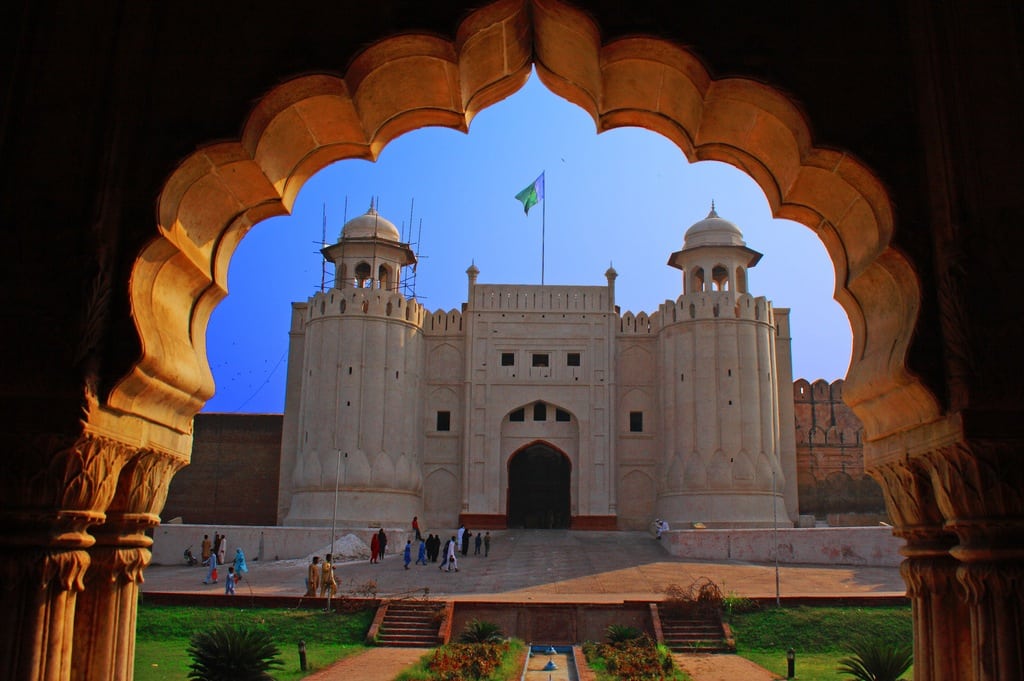Skift Take
When you mix years of mis-management, a bit of corruption, ambitious developers, and historic sites, the result can be anyone's guess. But it would be wise for city leaders to bet on the structure that's been around for centuries instead of another new mall.
Mohammed Jahangir can remember when his friends ran through the streets of the famous Walled City of Lahore, racing past the mosques and through the markets. Then came long decades when even walking through its streets, choked by illegal construction, was hard. Now, a pioneering new restoration project has allowed Jahangir, 80, to glimpse once more the city of his childhood.
“I can’t really run about any longer but at least my grandchildren can,” Jahangir said.
A string of conquerors, notably the Mughals, built the mosques, fortifications, roads and palaces which, by the 18th century, had turned Lahore, once a trading town on a branch of the silk route, into a stunning demonstration of imperial prestige.
The Walled City’s gardens and squares are now obscured by illegal shops and businesses, the skyline cluttered by unplanned tenements and bundles of cables. For many of the 200,000 inhabitants crammed into these four square kilometres, a fraction of Lahore’s seven million population, drinking water is a rarity. Levels of crime are high, rates of literacy low.
But last month the new Walled City of Lahore Authority (WCLA) – in effect an independent town council – met for the first time. The body oversees the ambitious plan to restore the past glory of the city’s oldest neighbourhood.
As ever in Pakistan, this is less simple than it might sound. The new authority will have to take on local mafias and win over local people to succeed. Many previous efforts have failed. “Nothing like this has been tried anywhere in the world as far as we know. Nowhere is a city itself a living monument,” said Shahid Durrani, a director of the WCLA.
Six months ago, work started in the narrow lanes leading to the Wazir Khan mosque from the Delhi Gate, from where the royal road once led to the current capital of India, 350 miles away and then the main seat of the Mughal emperors. The gate, an imposing, 8m-high brick, mortar and plaster structure, has been cleared of hoardings, illegal extensions and squatting stallholders.
Much of the £22m budget for the project has come from the World Bank. Some of the work, such as the restoration of the intricately decorated public baths adjacent to the Delhi Gate, is dramatic. The replacement of outworn sewers and the burial of dangerous, unsightly overhead cables is more mundane.
“Social mobilisation has been the key,” said Ahmas Bentarik, a sociologist who runs the WCLA’s effort to win the consent of the local community for the project. “The aim is not to create a museum. Here we have to tackle all issues.”
The biggest resistance has come from the business community.
“They want a big mall, a commercial plaza,” Bentarik said. “We’ve told them that if facilities are built here, people will come to shop here.”
In front of the newly cleared Delhi Gate last week, a very south Asian mix of donkey carts, rickshaws, shoppers, spice vendors and cars fought for space.
Many stallholders are unhappy at the restoration, claiming they have been inadequately compensated for losing their prime positions on the street.
“Of course we know that we don’t own the land but our grandfathers had stalls here before independence [in 1947] and the government has never bothered us before,” said Ajam Riaz, 48.
Other problems come from the powerful and wealthy businessmen who buy up and demolish dilapidated old homes, often centuries old, to build shops and apartments. One reason for creating the new authority is that it sidelines local officials, who have a reputation for taking bribes from the “commercial mafia”.
Eventually tourists may come, backers of the scheme hope. Lahore was once a significant draw for overseas visitors. But now Pakistan’s reputation as violence-prone puts off many.
The four kilometres of battlements that gave the Walled City its name were largely demolished by the British following the rebellion against their rule in India in 1857. There are no plans to rebuild them. A short remaining stretch will be restored but nothing more, said Bentarik.
For Mohammed Jahangir, it is enough that the carved frames and pierced terracotta screens around the windows in his 19th-century home, built during the rule of the powerful Sikh king Ranjit Singh, have been restored. He is teaching his granddaughter to read by the light filtering down from the gap between the close packed houses, high above. “She is reading to me, just like I read to my grandfather, here in this house, in this room,” he says.
![]()
The Daily Newsletter
Our daily coverage of the global travel industry. Written by editors and analysts from across Skift’s brands.
Have a confidential tip for Skift? Get in touch
Photo credit: Lahore Fort in Lahore, Pakistan. Muzaffar Bukhari / Flickr
